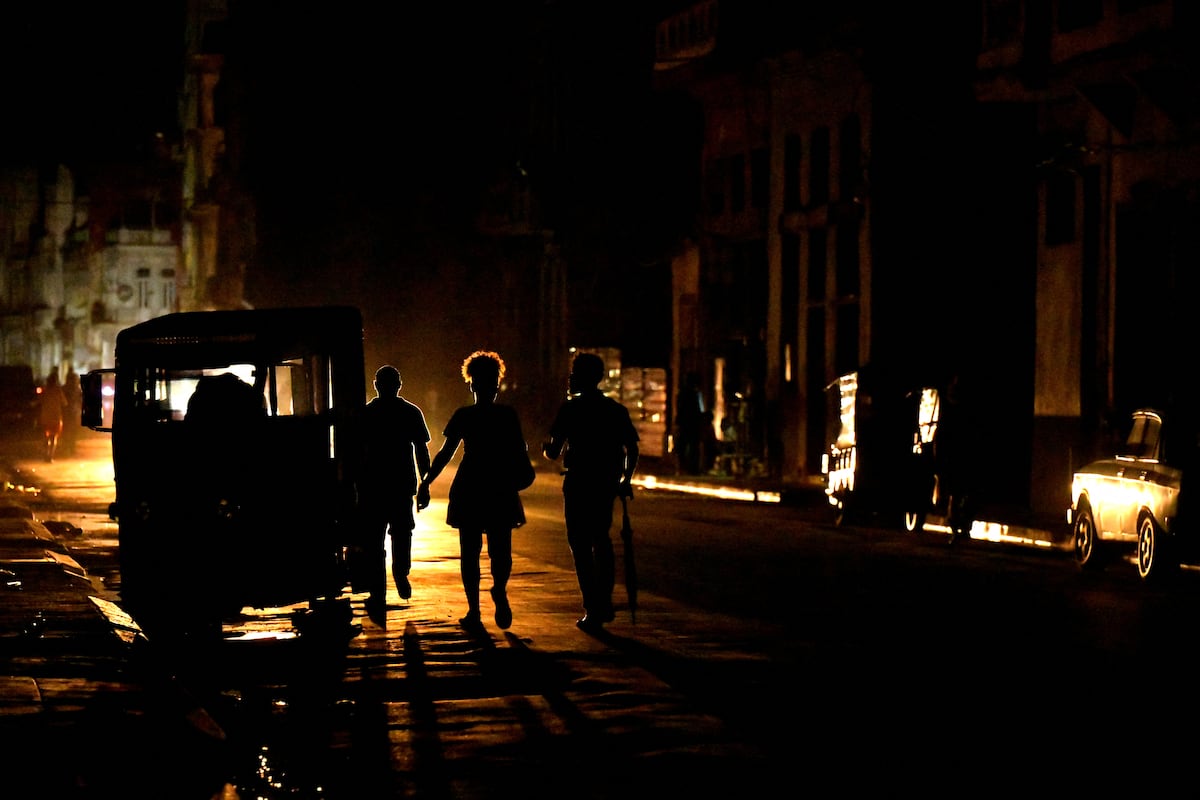Infra
Cuba’s obsolete electricity infrastructure is keeping the country in the dark

The long blackout suffered on October 18 in Cuba is yet another shadowy episode in the history of one of the most deteriorated and stressed electricity systems in Latin America. Decades of under-investment and an almost total dependence on largely imported fossil fuel have made it one of the most fragile in the region. This is despite having the ideal conditions for solar and wind power, which are completely changing the energy paradigm in rich countries and in many emerging ones as well.
The collapse of Cuba’s largest power plant, Antonio Guiteras in the northwestern province of Matanzas, is behind the latest blackout. Set up in 1988, it had been undergoing extensive maintenance for days after operating all summer. Investment in fossil-fuel-powered thermal plants is minimal despite them being the backbone of the island’s electricity production. The result is an obsolete system, largely of Soviet origin with its half-dozen large plants run mainly on fuel from Cuba-friendly countries, especially Venezuela.
In 2022, the last year for which the International Energy Agency (IEA), the energy arm of the OECD, has data, more than 83% of electricity was generated using petroleum derivatives, mainly the imported fossil fuels. Natural gas plants contributed another 12%. And renewables — biofuels; wind, with a few wind farms in the ‘experimental’ phase; hydro, with some 30 plants connected to the national grid; and solar — account for less than 5%. This minimal contribution from renewables accounts for much of the generation problems suffered in recent years.
Time warp
Besides the lack of investment in recent decades, the problem of fossil-fuel produced power is threefold. First, the dependence on imports: although the island produces crude oil, it is not enough to cover its domestic consumption and so it imports mainly from Venezuela and Mexico. Second, cost: electricity generation using oil, and, to a lesser extent, gas, is one of the most expensive in any modern electricity system and requires burning a resource as precious as foreign currency, which is scarce on the island. Third, the powercut factor: although the power plants are capable of producing electricity 24 hours a day, an episode of fuel shortage such as the one experienced in recent weeks due to bad weather preventing oil tankers from unloading, puts their entire electricity system in check. And fourth, Cuba’s carbon footprint; this is much larger than other countries of its size and population, which stands at around 11 million.

Ernesto Mastrascusa (EFE)
Tourist impact
Not even the tourist hotels, Cuba’s main source of foreign currency, have been able to escape the October 18 blackout, which left most of them completely cut off while elsewhere entire families were unable to cook their food and stood in long lines to access liquefied gas.
Cuba’s electricity crisis lasted over 24 hours. Some Havana residents confirmed that they had electricity in their homes, especially in those areas where Cubans have taken to the streets to protest not only the power cuts but also the lack of other basic services, such as drinking water and food. But some remained in the dark a day later or enjoyed a few hours of power before being plunged back into darkness.
“The electricity came on at almost five in the morning and they took it off at six,” explains Zulema Duvergel, a resident of the Bauta municipality, southwest of Havana. She has been trying to wash her clothes for a day and a half. “I got them half-washed and now I have to wring them out by hand.”
Others have it worse. Lizbet Licor, from Remedios, Villa Clara, in the center of the island, has been without electricity for 36 hours. “They put it on for two hours, it went out again and we still don’t have it,” she says. “I’m cooking with an improvised charcoal stove, doing a thousand jobs, with no water in the tank. I haven’t been able to rest for three nights. She says the discomfort led some neighbors to break the windows of a store in town to demand that the authorities restore the service.
The Cuban government insisted that it would not take longer than October 19 for the Antonio Guiteras thermoelectric plant to start operating again. Some micropower generation systems have already started to provide electricity to scattered municipalities and neighborhoods in the country. However, it is still uncertain when the island’s authorities will be able to guarantee a service that doesn’t fail Cubans on a regular basis.
Miguel Díaz-Canel’s government is aware that the future lies in renewables. But investment is a scarce commodity on the island in recent years. Last March, the Cuban authorities announced a plan to install 92 solar parks by 2028. They said this would increase the island’s generation capacity by around two gigawatts, raising the green energy contribution to almost 25% of the national electricity consumption by the end of the decade.
According to Díaz-Canel, “We are working hard and tirelessly to recover the electricity system.” He added that it is the government’s “absolute priority” to solve “this highly sensitive energy issue for the nation.” Meanwhile, The Ministry of Energy and Mines has spoken about having “greater electricity coverage in the country.”
Deja Vu
The situation is similar to that experienced a little more than two years ago, at the end of September 2022, when Hurricane Ian left the island in a situation of “zero production.” Since then, an endless number of partial power cuts have fueled social unrest while undermining the struggling Cuban economy — GDP fell 1.9% last year and this year growth is forecast to be a weak 0.5%, according to the latest projections of ECLAC, the economic arm of the United Nations for Latin America and the Caribbean.
In Havana, which usually has the least blackouts due to it being the capital, it is not unusual for the power to be cut for six hours a day several days at a time. In less populated municipalities, these power cuts can extend to around 20 hours a day. Following the national blackout, the government paralyzed “all work activities” apart from those “strictly necessary,” with probable dire consequences for the economy. It has also ordered all empty premises be disconnected and high consumption equipment, including ovens and fridges, be turned off during peak hours.
Sign up for our weekly newsletter to get more English-language news coverage from EL PAÍS USA Edition










